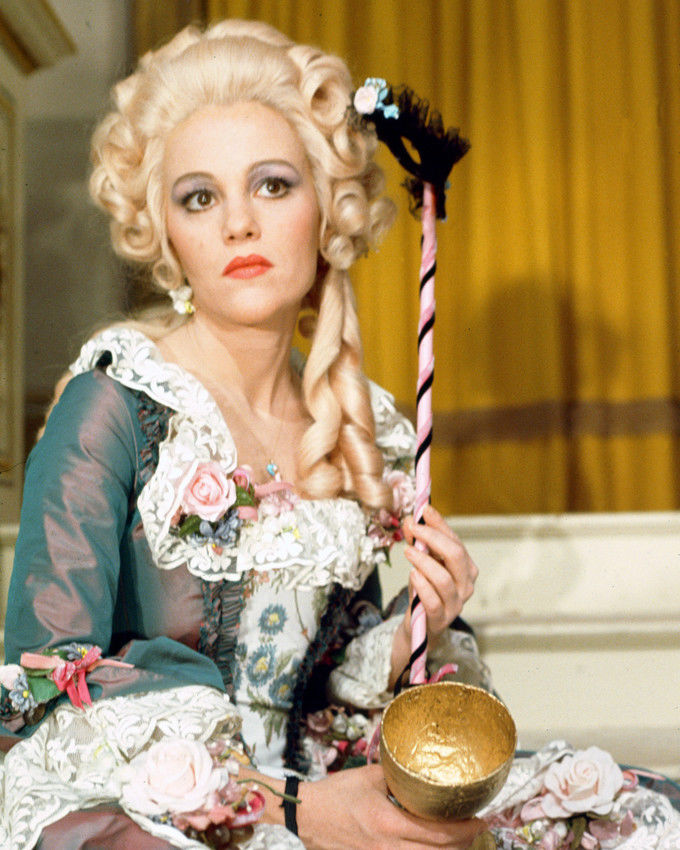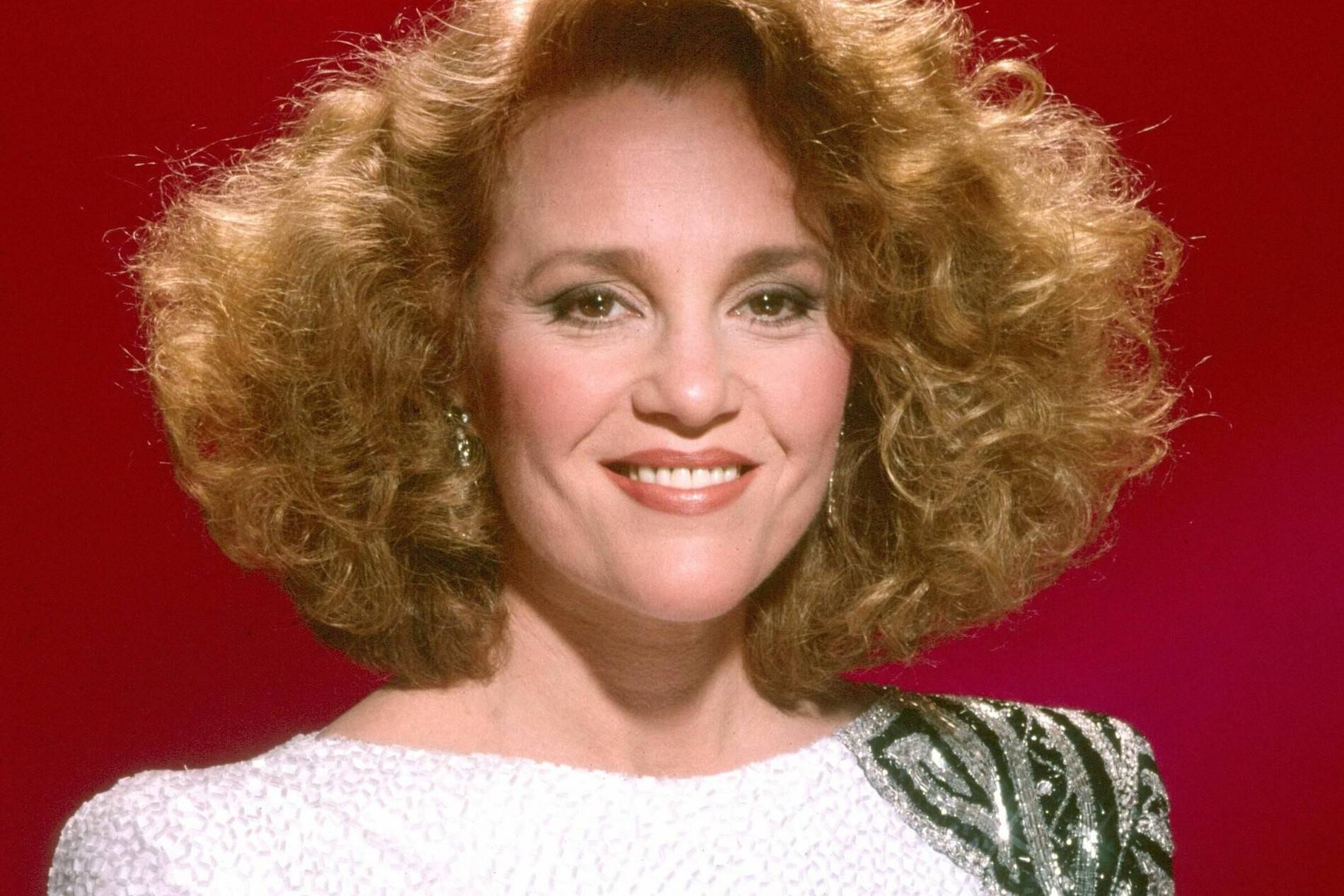
She was nominated for two Oscars and won a Tony. Mel Brooks called her genius. At 57, ovarian cancer killed her—two months after she married in Central Park. This is Madeline Kahn.
In 1974, audiences watching Blazing Saddles witnessed something extraordinary: a blonde woman in a saloon, singing “I’m Tired” with breathy exhaustion, every note technically perfect despite being deliberately ridiculous.
Her name was Madeline Kahn, and she was playing Lili von Shtupp—a parody of Marlene Dietrich that was so pitch-perfect, so hilariously exaggerated, that it earned her an Oscar nomination for Best Supporting Actress.
Mel Brooks, who directed her, said she had captured something magical: classical training combined with fearless comic instinct.
But Madeline Kahn wasn’t supposed to be a comedian. She was supposed to be an opera singer.
Born September 29, 1942, in Boston, Madeline grew up mostly in New York City. Her mother, Paula, was a trained singer who later worked as a stage manager. Music filled their household.
Madeline showed exceptional vocal talent early. She had perfect pitch—the rare ability to identify any musical note without reference. She studied music at Hofstra University, training her soprano voice with opera in mind.
She dreamed of singing Puccini and Mozart on great stages, of being a classical musician taken seriously by the opera world.
But something else kept happening: people laughed.
When Madeline performed, her expressive face, her precise timing, her ability to find humor in dramatic moments—these things made her naturally funny. Comedy found her, even when she was trying to be serious.
After graduating, Madeline worked in musical theater, performing on and off-Broadway. She was talented, hardworking, and classically trained. But she still hadn’t found her breakthrough.
Then came 1972 and What’s Up, Doc?
Director Peter Bogdanovich cast Madeline as Eunice Burns, the uptight, nasal-voiced fiancée of Ryan O’Neal’s character. It was a small role, but Madeline made it unforgettable.
Her Eunice was neurotic, controlling, and hilariously precise. Every line delivery was perfect comic timing. Audiences loved her.
Mel Brooks saw What’s Up, Doc? and immediately knew: he had to cast this woman in his next film.
Blazing Saddles (1974) gave Madeline the role that would define her career: Lili von Shtupp, the world-weary saloon singer.
The role required someone who could sing beautifully while being deliberately absurd. Someone classically trained enough to nail Marlene Dietrich’s vocal style, but funny enough to make it comedy gold.

Madeline was perfect.
Her musical number “I’m Tired”—sung with breathy exhaustion and exaggerated sultriness—became iconic. Every note was technically correct, every phrase properly supported. But it was also hilariously over-the-top.
She earned her first Oscar nomination. At 31, Madeline Kahn had arrived.
Later that same year, she starred in Mel Brooks’s Young Frankenstein, playing Elizabeth—Dr. Frankenstein’s haughty, high-strung fiancée.
The role gave her one of cinema’s most famous screams: a prolonged, musical, perfectly modulated shriek that only someone with Madeline’s vocal training could have delivered.
Gene Wilder, her co-star, later said she was the only actor who could make him break character. Her improvisational instincts and comic timing were that good.
But Madeline’s career wasn’t without struggles.
During Paper Moon (1973)—which actually came out before her Mel Brooks films—director Peter Bogdanovich clashed with Madeline over her tendency to improvise and add jokes to scenes.
Bogdanovich wanted precise adherence to the script. Madeline believed in finding laughs through spontaneity. The tension was real.
Despite the friction, Madeline earned her second Oscar nomination for Paper Moon. She was proving herself one of Hollywood’s most gifted comic actresses.
Throughout the 1970s and 80s, Madeline continued working in film and theater. She appeared in High Anxiety, Clue (delivering the film’s most quoted improvised line: “Flames…on the side of my face”), and numerous other projects.
But she never won an Oscar. Both nominations—Paper Moon and Blazing Saddles—ended without wins.
In 1993, Madeline finally received the recognition she deserved: a Tony Award for Best Actress in a Play for The Sisters Rosensweig.
At 51, after decades of brilliant work, she’d won theater’s highest honor.
But privately, Madeline was fighting a battle few people knew about.
In the mid-1990s, she was diagnosed with ovarian cancer. The same disease that had killed her friend Gilda Radner in 1989.
Madeline largely kept her diagnosis private. She continued working through treatment, appearing on the sitcom Cosby from 1997-1998, bringing warmth and wit to a role despite her declining health.
Those who worked with her during this period marveled at her professionalism and spirit. She would rest between takes, then return with full energy—never complaining, always committed to the work.

In 1999, Madeline married John Hansbury, a man she’d been close to for years. The ceremony was held in Central Park in October—a small, intimate gathering of close friends.
Madeline, knowing her time was limited, wanted to celebrate love and joy while she still could.
Two months later, on December 3, 1999, Madeline Kahn died at age 57.
Her death came too soon, too quietly. The woman who’d made millions laugh, who’d brought operatic precision to comedy, who’d elevated every project she touched—was gone.
Looking back at Madeline Kahn’s career, what stands out isn’t just her talent—though she had it in abundance. It’s her uniqueness.
She was classically trained but fearlessly funny. She could sing opera but chose comedy. She improvised brilliantly but respected craft. She was nominated for Oscars but won a Tony.
She defied easy categorization, and that’s what made her special.
Mel Brooks once said casting Madeline was like finding a diamond—rare, precious, capable of things other performers couldn’t do.
Gene Wilder said she could make him break character just by existing in a scene.
Critics called her one of the greatest comic actresses of her generation.
And audiences simply loved her—for her wit, her warmth, her ability to make even small roles memorable.
Madeline Kahn never became a household name like some of her contemporaries. She never won an Oscar. Her film career was shorter than it should have been.
But everyone who saw her work remembered her. That voice. That face. That perfect comic timing combined with classical precision.
She was nominated for two Oscars. She won a Tony. She created characters that are still quoted and celebrated decades later.
And at 57, ovarian cancer took her—just two months after she married the love of her life in Central Park.
Madeline Kahn deserved more time. More recognition. More opportunities to show the world what she could do.
But what she left behind—the performances, the laughter, the proof that classical training and comedy genius can coexist—that’s permanent.
She wanted to sing opera. Instead, she became one of cinema’s greatest comic actresses.
And in doing so, she proved that sometimes the greatest art comes from unexpected places.
Madeline Kahn: classically trained, hilariously gifted, gone too soon.
